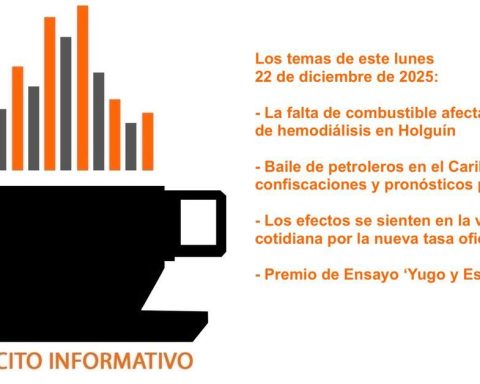(EFE).- Dailin Terrero has as her last memory of the night of December 21, 2021 the light of the car that hit her along with her 11-year-old son on the path of a coastal highway in Santiago de Cuba. Three days later she learned that her little girl had died. The son of this 35-year-old unemployed woman, who is still suffering after-effects from the accident –he needs to take medication to sleep and his leg will be operated on for the third time in an operating room–, is part of a rising statistic on the Island: accidents of deadly traffic.
According to official figures, the number of people killed on Cuban roads – a large part of them pedestrians and cyclists – increased by 24% in the last year, reaching 589.
Terrero, in a telephone interview with Efe, said with a broken voice that he has lost his “reason for living.” According to what he said, the driver – free pending trial after paying bail – was speeding and had alcohol in his blood.
The death of his son came to light after Terrero published an open letter to the president of Cuba, Miguel Díaz-Canel, in which he narrated his heartbreak and asked for justice
The death of his son came to light after Terrero published an open letter to the president of Cuba, Miguel Díaz-Canel, in which he recounted his heartbreak and asked for justice, just a few days after an incident in the central zone of the country left four people dead and two injured.
It is a constant trickle on Cuban highways, a tragedy that is regularly covered by the Cuban media and that is shared frequently and with concern on social networks.
Accidents have been the fifth leading cause of death in Cuba for several years, according to official data.
The main causes of traffic accidents in Cuba, highlights the National Road Safety Commission (CNSV), are the driver’s inattention, failure to comply with the right of way and speeding.
But the poor state of the roads and the aging vehicle fleet of the Caribbean country also have an influence, where cars more than 50 years old travel, like the one that ran over Terrero and his son.
Added to this are the poor signage on the streets and the lack of lighting, as well as the lack of driver education.
The secretary of the state-owned CNSV, Reinaldo Becerra, told Efe in an interview that a total of 8,354 accidents took place last year, an increase of 8.32% (632) compared to 2020.
This means that during 2021 an average of 23 daily incidents were recorded.
During 2021 an average of 23 daily incidents were recorded
With the increase in 2021, a streak of four consecutive years of decline in the number of claims was broken: 11,187 (in 2017), 10,070 (2018), 9,421 (2019) and 7,722 (2020).
The province of Santiago de Cuba – the region where Terrero lost his son – together with the capital Havana, concentrated the largest number of claims during 2021, Becerra declared, although without specifying figures.
Becerra confirmed that 65% of accidents take place in urban areas. However, the most serious occur in rural areas, he noted.
Data from the Commission compiled by Efe confirm this trend. In 2020, the western province of Mayabeque, with high agricultural activity, registered the highest risk rate of deaths from traffic accidents (9.6 per 100,000 inhabitants) in the country and well above the national average (4.2 ).
The second province where there is a higher probability of death on the road is eastern Camagüey, traditionally distinguished by its sugar and cattle industry.
Becerra specified that the most typical accidents are the running over of pedestrians and cyclists, for which he assured that “work is being done” to “reorder road traffic for the different types of transport.”
In addition, the official explained that measures have been implemented to reduce these figures, such as a proposal for driver education from an early age and greater control in compliance with the law.
________________________
Collaborate with our work:
The team of 14ymedio is committed to doing serious journalism that reflects the reality of deep Cuba. Thank you for joining us on this long road. We invite you to continue supporting us, but this time becoming a member of our newspaper. Together we can continue transforming journalism in Cuba.

















